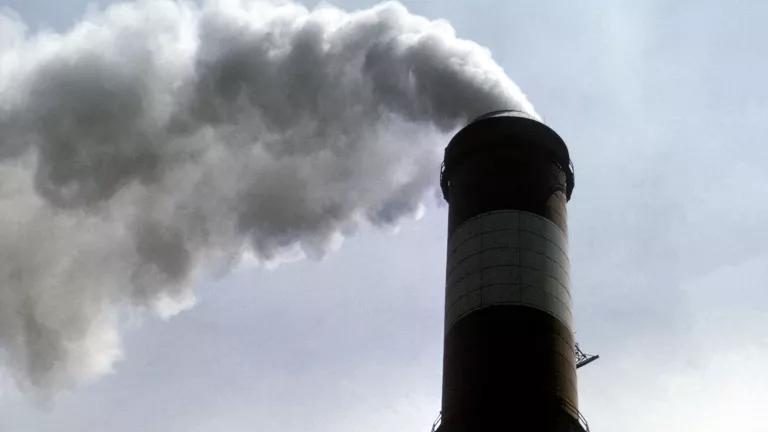Oil and Gas Leasing Is Off the Rails
At this point in the Trump administration, it is perhaps trite to say something has gone off the rails, but the leasing of rights to public land for use by oil and gas drillers has done just that.

Oil wells on Bureau of Land Management land in California.
At this point in the Trump administration, it is perhaps trite to say something has gone off the rails, but the leasing of rights to public land for use by oil and gas drillers has done just that.
Since the COVID-19 pandemic began in early 2020, the Bureau of Land Management has held 13 lease sales for drillers looking to lock up cheap oil and gas rights at the expense of U.S. taxpayers, clean air, clean water, vital wildlife habitat, and pristine wildlands. Despite flagging demand for fossil fuels nationally and globally, hundreds of wells shutting down, the lowest number of operating oil rigs seen in 15 years, and numerous bankruptcies across the industry, the public land fire sale taking place over the last four years has hardly lost any steam as more and more oil and gas resources were given away to industry throughout 2020. As the dust has settled, the federal estate—lands managed for use by everyone in this country—will have seen oil and gas rights to 273,000 acres sold at an average price of $58/acre. That marks a 1,571% decrease in average value from 2018, when the price of an average acre leased was $875.
Of course, COVID-19 is far from running its course, and the U.S. remains gripped by the immense societal, health, and economic challenges it has brought to the country. Nonetheless, the administration has teed up another round of massive sales for later this year, with current acreage on offer slated to top 360,000 acres in New Mexico, Colorado, Wyoming, and Utah. If the current trend in low bids holds, this massive giveaway of public lands will yield almost negligible benefit, in the form of revenues, to the general U.S. population.
And there is no reason to believe that oil or gas prices will experience a broad rebound in the coming months before the remaining lease sales of 2020 take place. With further stimulus talks in the U.S. now torpedoed, the oil and gas market’s hopes for a second infusion of cash into the U.S. economy appear dashed. All of which suggests that the Bureau of Land Management’s October and December offerings will result in little more than a further giveaway to an industry that is already sitting on millions of unused acres of leases.

Since oil prices peaked in 2018, the competitiveness of bidding for oil and gas leases has declined, even as millions of acres have been offered up by the BLM.

The prices paid by oil and gas drillers for federal leases roughly correlate to the strength of oil markets and the acreage up for auction. With prices well off recent highs, leases sold later this year are almost certain to go for rock bottom prices.
At the same time that the fire sale of public lands continues apace, the U.S. Government Accountability Office (GAO) continues to release findings that the Bureau of Land Management is not managing public lands and resources to maximize public benefits. In a report released just this week, the GAO found that the Bureau of Land Management’s handling of so-called “Royalty Relief” during the COVID-19 pandemic was done haphazardly and unpredictably. Worse, the report uncovered that the Bureau granted relief requests—essentially drastic reductions in the amount companies owe the U.S. Treasury for oil and gas produced on federally owned lands—without any showing by producers of the necessity for such reductions. In other words, the fear of another giveaway to oil and gas producers that arose back in April has now been definitively confirmed.
Because of many years of mismanagement by the Bureau of Land Management, Congress has put forth a number of reforms to the oil and gas leasing system in recent years. For example, H.R. 3225, introduced by Representative Levin and recently passed out of the House Natural Resources Committee, would increase rental rates, end non-competitive leasing, end the practice of anonymous bidding, increase royalty rates, and enhance the public’s ability to participate in the leasing process. Similar bills have been introduced by Representatives McAdams and Rooney and Senator Udall. Other bills, slightly narrower in scope, address similar areas in need of reform. Bills introduced by Senators Cortez Masto, Tester, and Bennet, for instance, would end the practice of leasing lands with little or no potential for economic development, prohibit the practice of non-competitive leasing altogether, and significantly expand the opportunities for public engagement while requiring substantial increases in transparency.
While the Bureau of Land Management’s oil and gas leasing practices are ripe for major reforms, the massive area of land under lease for oil and gas production in the U.S. points to a far more challenging problem. With climate change driving record devastation this summer, from wildfires along the entire West Coast to the landfall of multiple major hurricanes, the entire practice of leasing public lands for fossil fuel production should be halted. The Paris Climate Agreement was signed in 2015, with an ambition to hold the average global temperature below a 1.5 degrees Celsius increase. Since then, global emissions have continued to rise, and the U.S. has stepped back from its leadership role in driving positive global change. Instead, during the past four years, the Trump administration has leased an additional 4 million acres of federal land for fossil fuel production, a staggering number that represents nearly 20% of all public lands under lease today and an area larger than the state of Connecticut.



